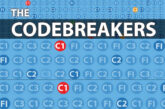
Need help with cracking those EICR codes? The technical team at NAPIT, with the help of the 18th Edition Codebreakers publication, answer your latest coding queries. Click on the photos for a closer look!
DANIEL KENNY: I CAME ACROSS THE PICTURED ITEM WHEN CARRYING OUT AN EICR – CLEARLY A C2 (ACCORDING TO MY ASSESSOR AND THE BIG BROWN BOOK)! NEEDLESS TO SAY, THE RODENT WASN’T TRAINED IN CLASSICAL MUSIC BUT DID A VERY GOOD JOB AT BEING THE CONDUCTOR!
It’s not surprising that we encounter rodents interacting with electrical installations although it’s more often cable damage and subsequent faults that are then discovered.
One of the first things we need to consider before removing the dead mouse is whether we can we safely isolate the supply to commence work, as the timorous beastie is conducting across the incoming terminals. Hopefully there’s a double-pole isolator but, if not, it may require a call to the safe isolation provider to safely remove the cut-out fuse.
Expired vermin can pose a serious health risk, as they can carry a variety of diseases and parasites. As such, we have to consider the health and safety risks to ourselves, to the client and any other party. Never just remove the poor unfortunate by bare hands, use disposable gloves and a filter mask instead.
Have a sealable bag ready to enclose the vermin and then dispose in a general rubbish bin or inform the client to ask the local authority to collect the deceased.
This situation may require the replacement of the internal components, main switch and circuit-breakers, depending on contamination and whether there has been damage to the devices from any fault currents.
Assessment of the environment would have to be considered if vermin were likely to return (quite possibly relatives of the poor creature), so this may involve increasing the IP rating for the consumer unit to restrict access.
Order your copy of NAPIT Codebreakers here
Read more of the latest Codebreakers articles here










